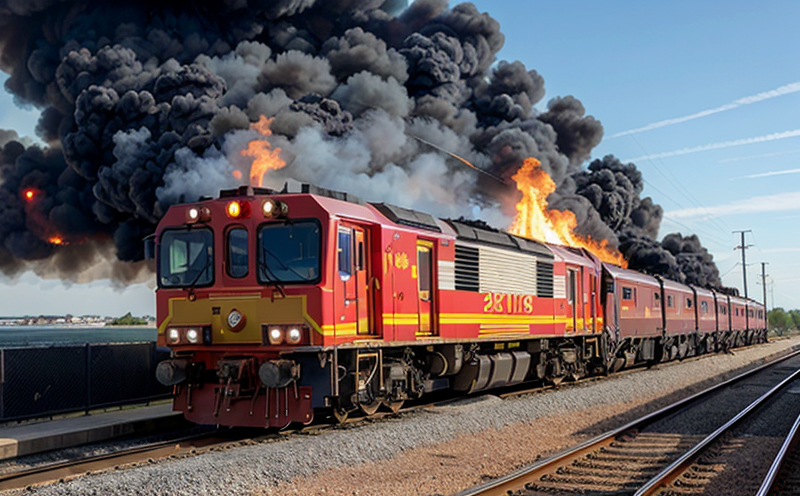Heat Release Rate Testing of Marine Cabin Materials
The heat release rate (HRR) testing of marine cabin materials is a critical component in ensuring the safety and compliance of ships and railway carriages. This test evaluates how rapidly combustible materials produce heat when exposed to an ignition source, providing insights into their flammability characteristics. The results are crucial for meeting regulatory standards and enhancing onboard safety.
In the context of marine environments, where fire can be particularly dangerous due to confined spaces and limited escape routes, the proper selection of cabin materials is paramount. The heat release rate test helps in evaluating these materials based on their ability to resist ignition, prevent flame spread, and reduce smoke production. By conducting this test, manufacturers and shipbuilders can ensure that the materials used meet the stringent requirements set by international standards such as ISO 56601:2017 for marine applications.
The testing process involves exposing a specimen of the material to a controlled flame source in a calorimeter. The calorimeter measures the heat released by the specimen over time, providing data on its combustion properties. This information is vital for assessing the fire risk and ensuring that materials comply with regulatory requirements such as SOLAS (International Convention for the Safety of Life at Sea) and IEC 60348-1:2015.
The test helps in identifying materials that are more susceptible to rapid ignition, which could lead to catastrophic incidents. By understanding these properties, engineers can design safer cabins with a lower risk of fire spread. Furthermore, the results from this testing contribute significantly to the overall safety and compliance of marine vessels, ensuring they meet international standards for fire safety.
For quality managers and compliance officers, HRR testing is essential in validating that new materials or modifications comply with specified regulatory requirements. R&D engineers can use these test results to develop safer, more efficient cabin designs. Procurement teams benefit from this data as it helps them make informed decisions about sourcing materials that meet the necessary safety standards.
The marine sector places significant emphasis on fire safety due to the confined spaces and high-risk nature of operations at sea. The HRR testing ensures that the materials used in these environments are not only functional but also inherently safer, reducing the risk of fires that can have severe consequences for crew and passengers.
Applied Standards
The heat release rate testing of marine cabin materials is governed by several international standards. The primary standard used is ISO 56601:2017, which provides a comprehensive framework for the testing method. Additionally, IEC 60348-1:2015 offers supplementary guidelines that are particularly relevant in the context of electrical and electronic equipment.
These standards outline the procedures for specimen preparation, apparatus specifications, and acceptance criteria. Specimens must be cut to specific dimensions according to the standard, ensuring consistency across tests. The calorimeter used during testing must meet stringent accuracy requirements to ensure reliable data. Acceptance criteria define the maximum heat release rate allowed for materials used in different parts of a vessel.
Compliance with these standards is mandatory for manufacturers and shipbuilders aiming to ensure their products meet regulatory requirements. Failure to comply can result in non-conformance penalties or product recalls, which can be costly and damaging to reputation.
Customer Impact and Satisfaction
- Enhanced Safety: Customers benefit from improved safety as materials tested meet stringent fire safety standards.
- Regulatory Compliance: By ensuring compliance with international standards, customers avoid legal penalties and maintain a positive reputation.
The testing process not only ensures that the materials used in marine cabins are safe but also enhances customer satisfaction by reducing potential risks associated with fire incidents. This aligns with broader safety initiatives aimed at protecting lives and property.
Competitive Advantage and Market Impact
- Innovation Leadership: By staying ahead of regulatory requirements, customers can innovate in cabin design without compromising on fire safety standards.
- Market Differentiation: Compliance with international standards positions customers as leaders in the market, attracting clients who prioritize safety and compliance.
The ability to test materials for heat release rate ensures that customers are not only meeting current standards but also preparing for future regulations. This competitive edge can be crucial in gaining a foothold in high-risk markets where fire safety is paramount.





